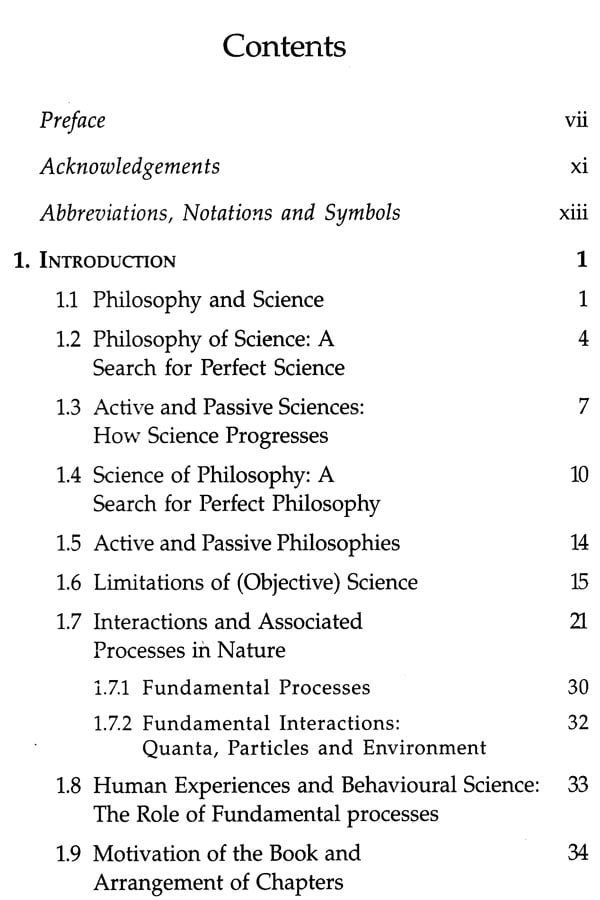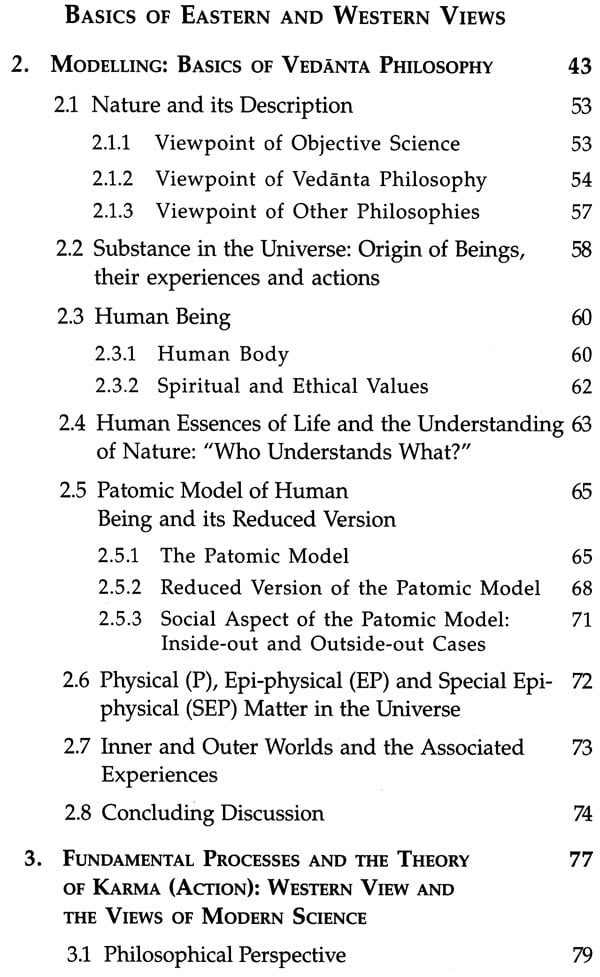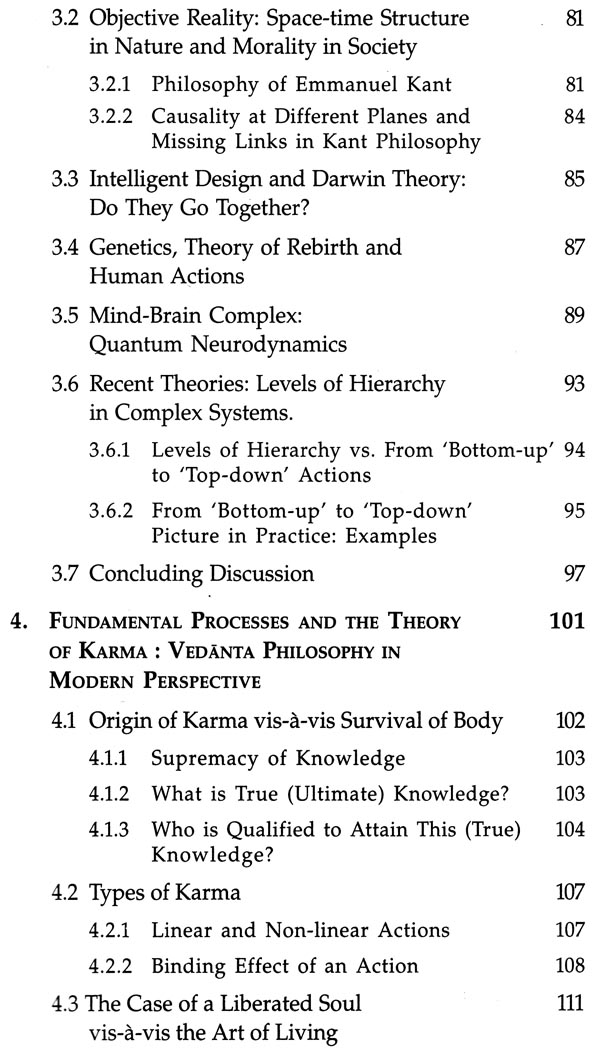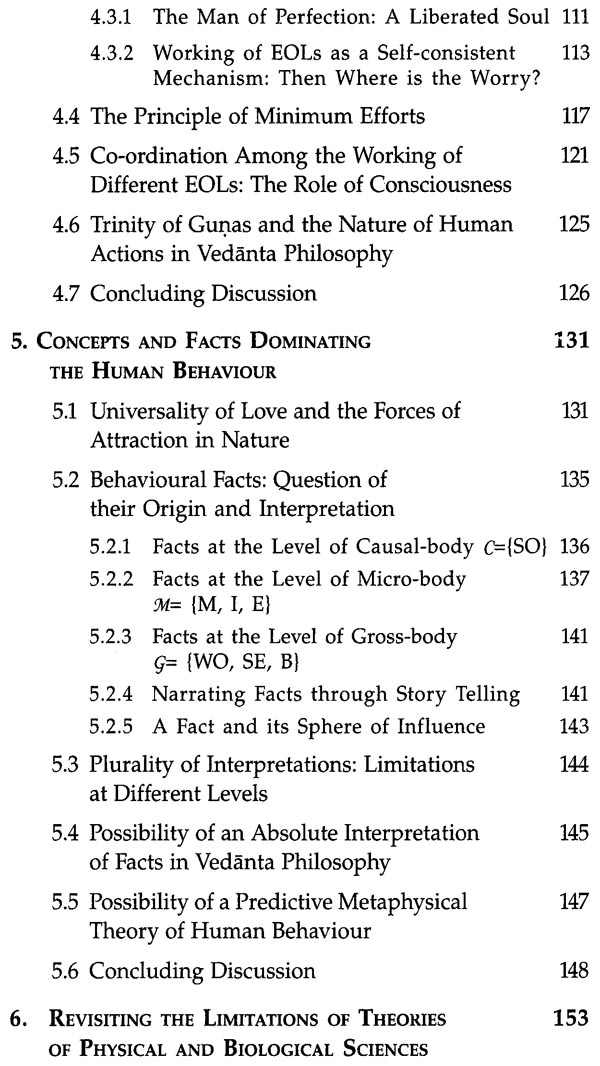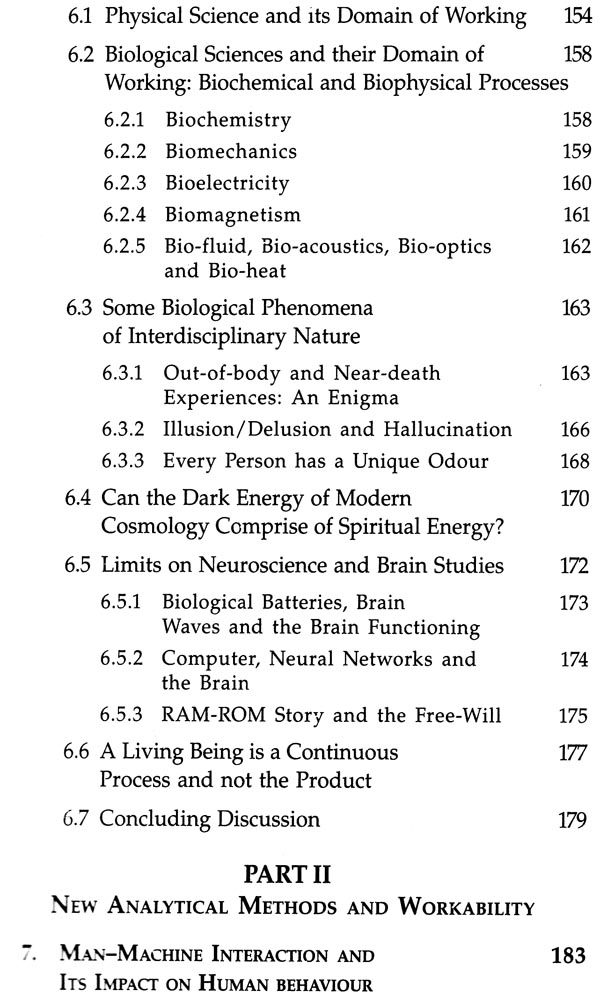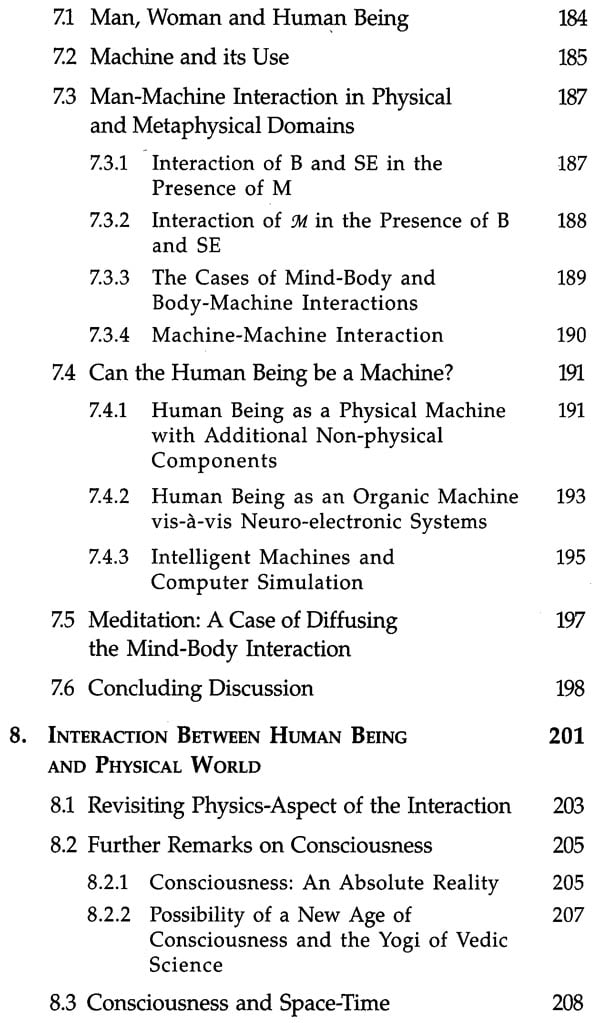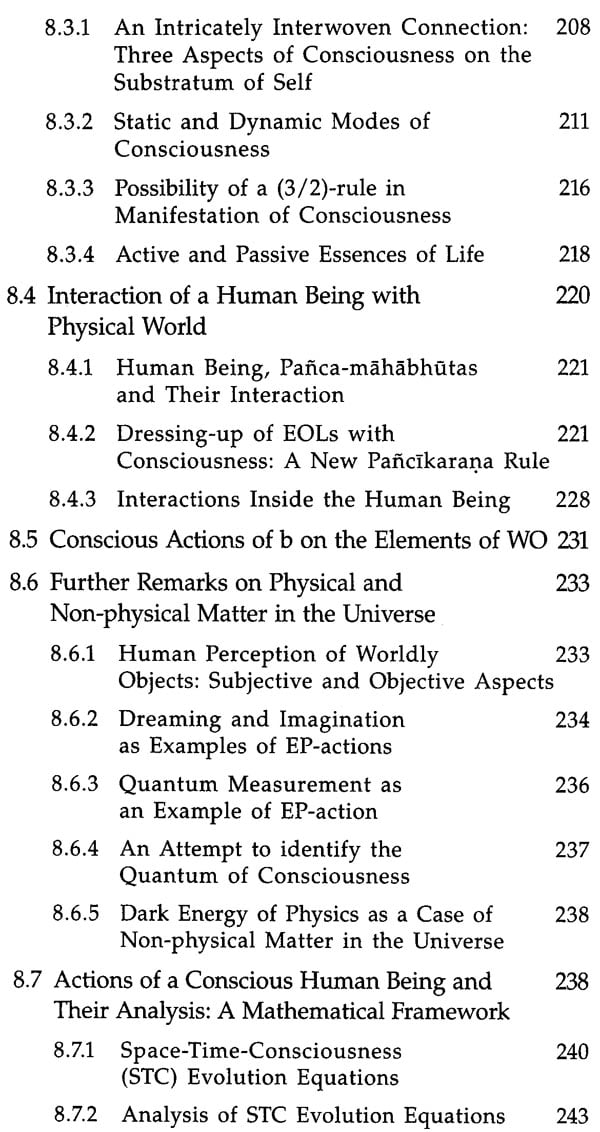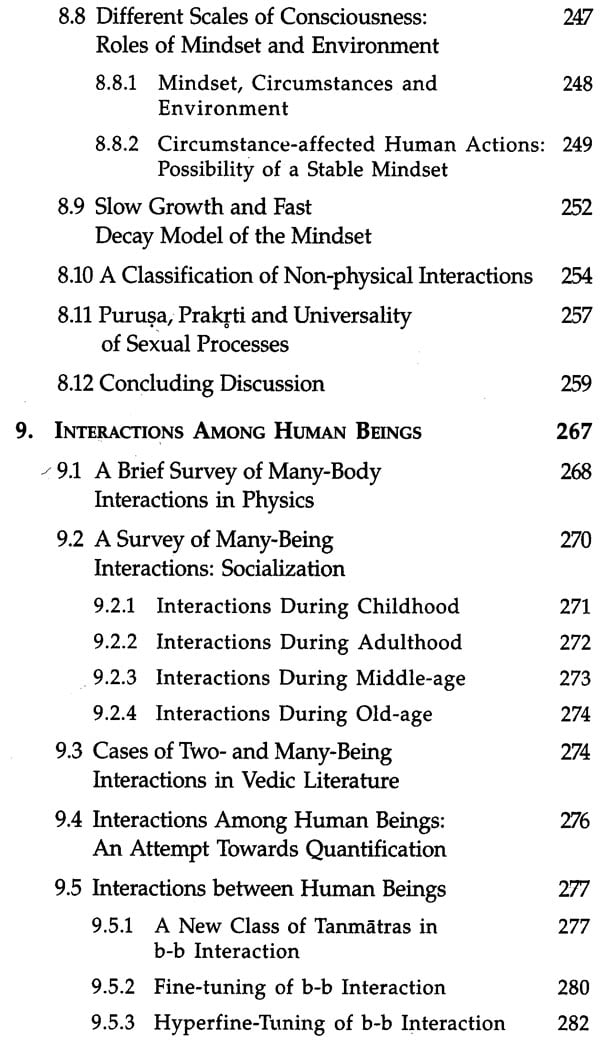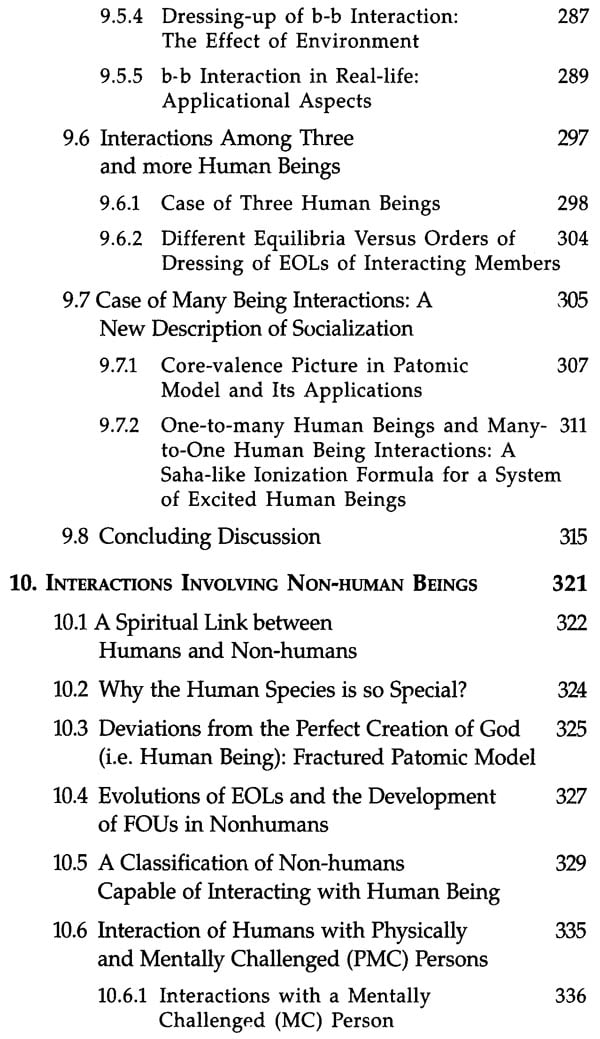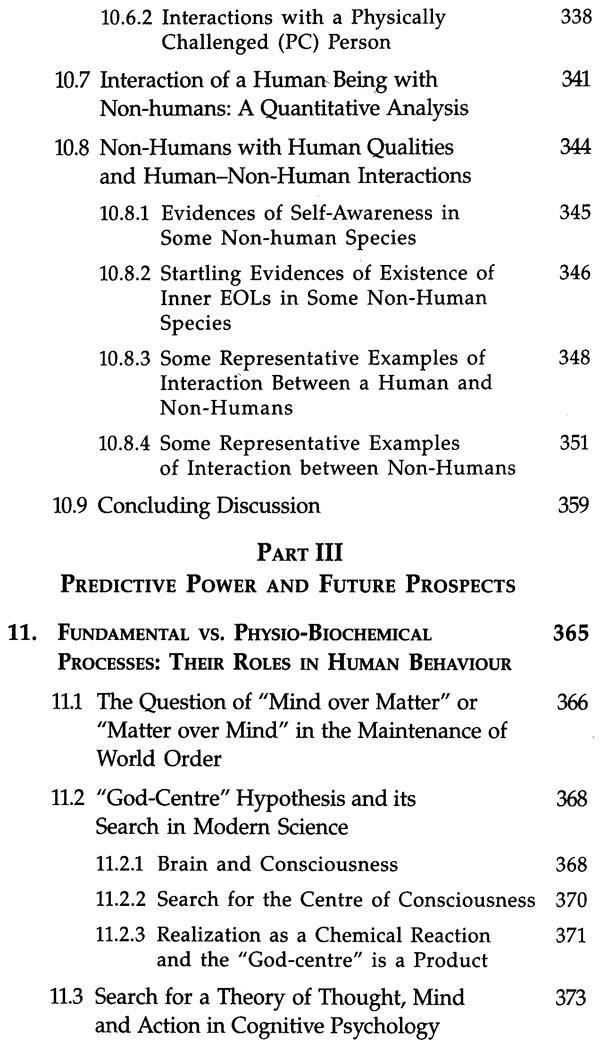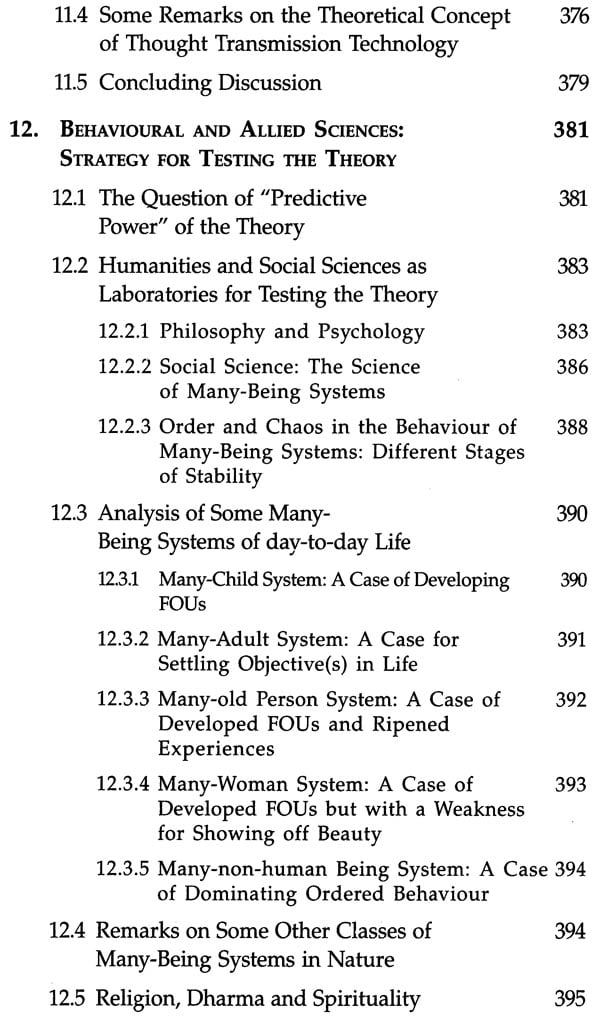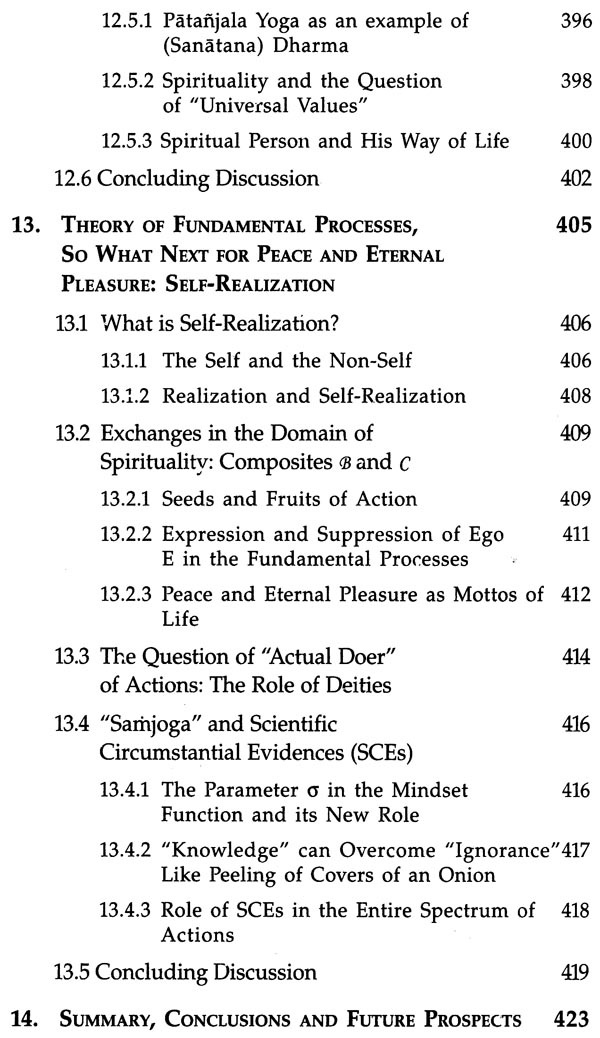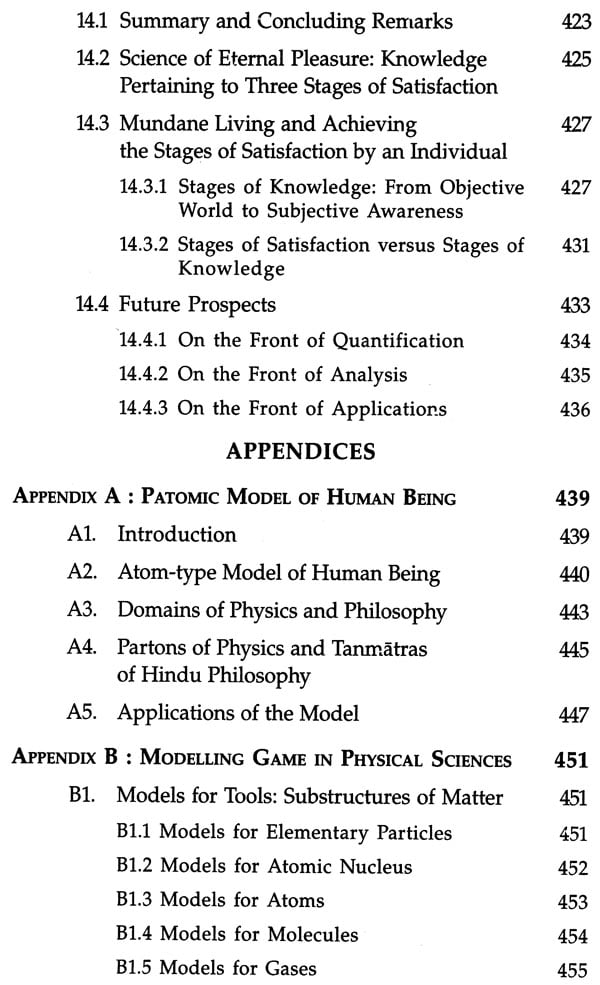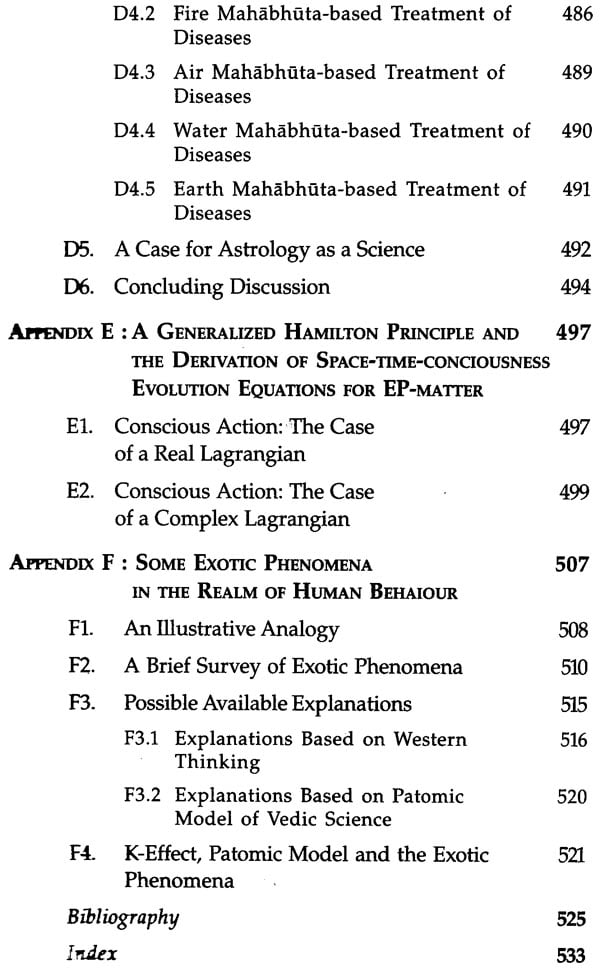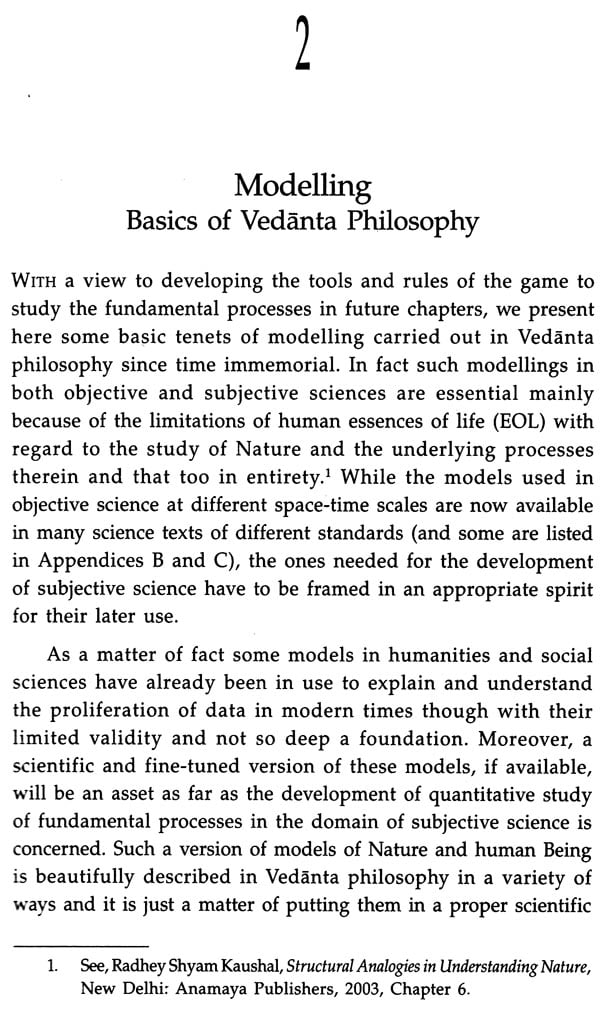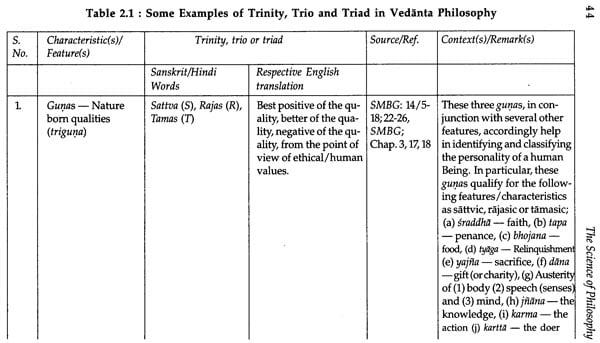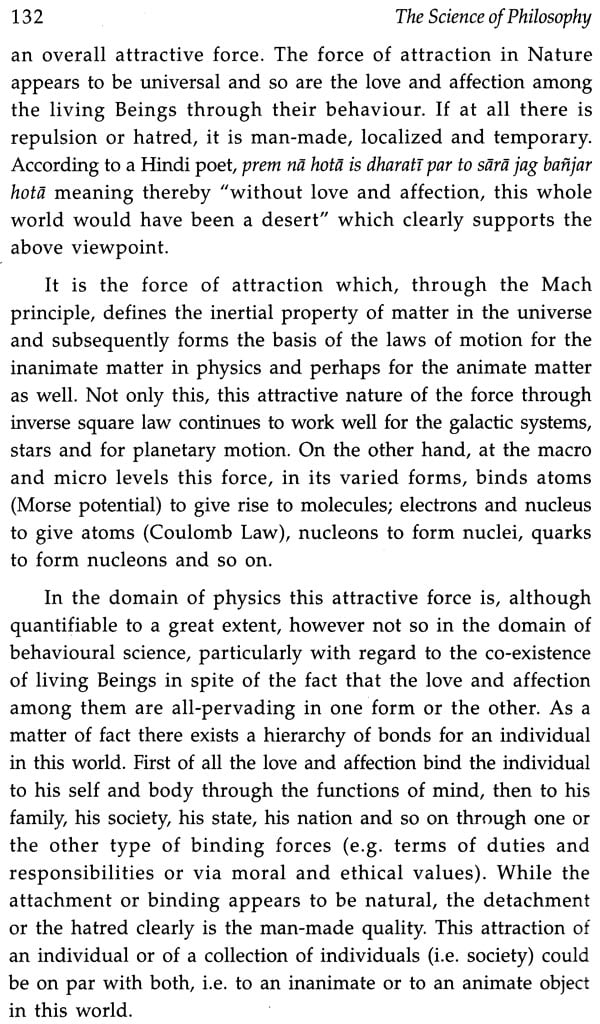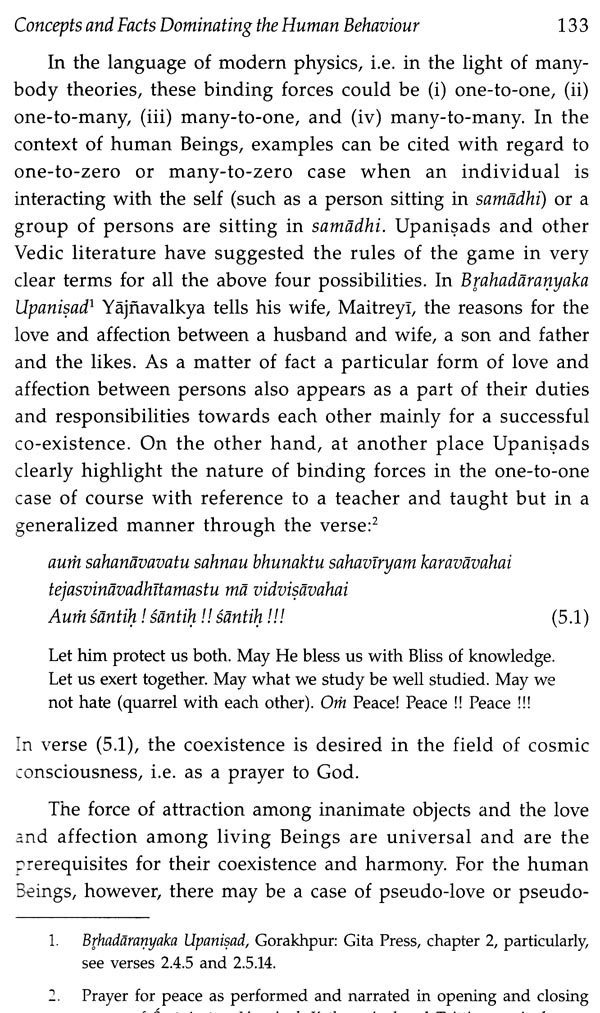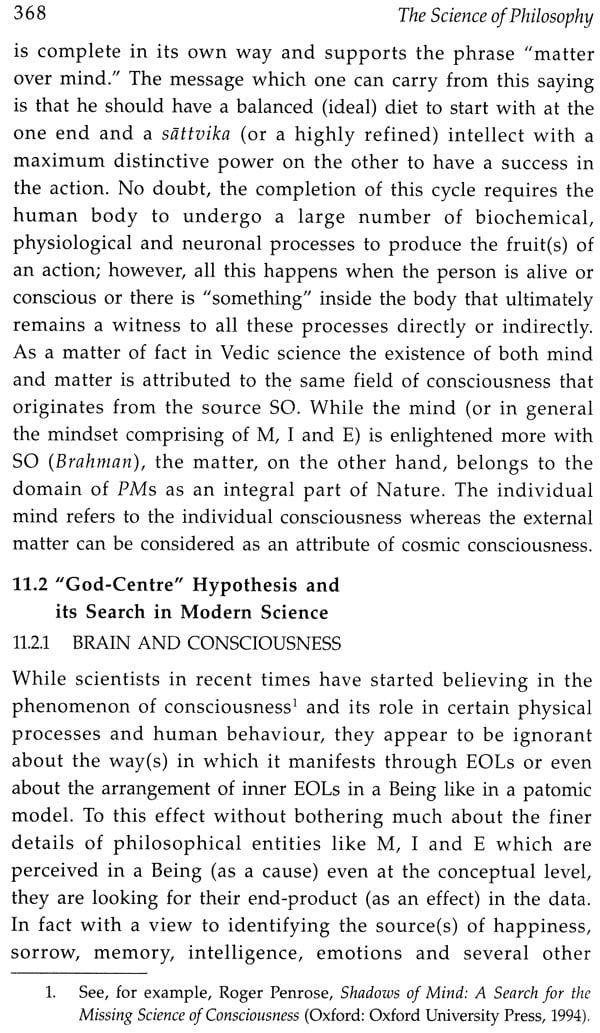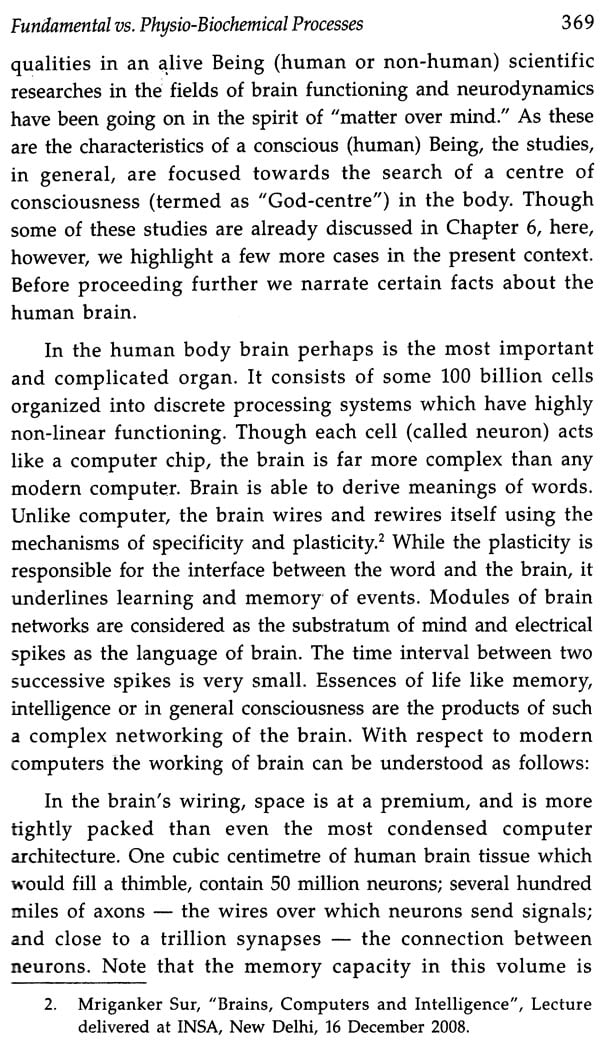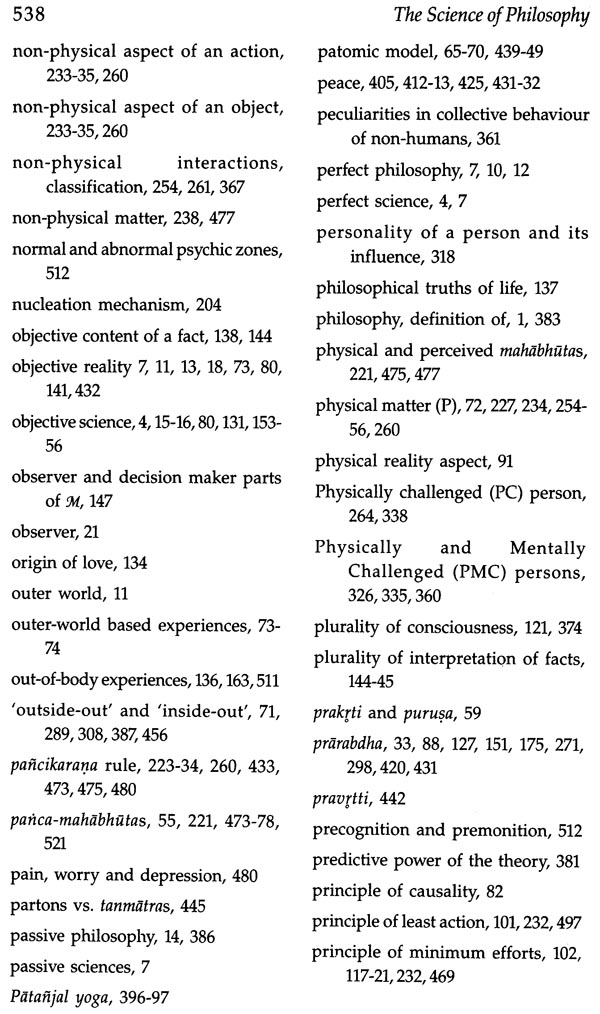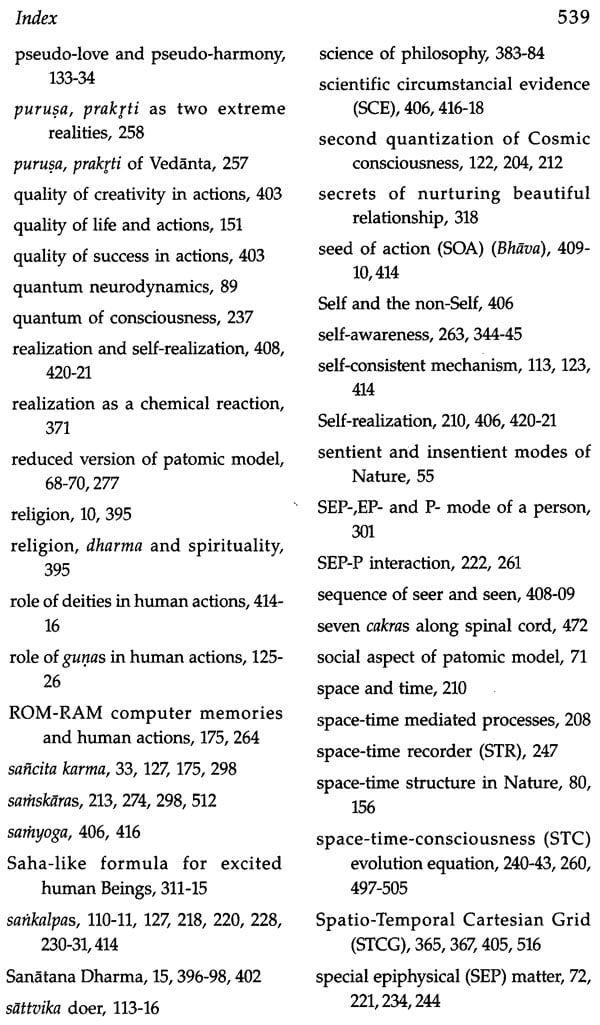
The Science of Philosophy (Theory of Fundamental Processes in Human Behaviour and Experiences)
Book Specification
| Item Code: | NAW069 |
| Author: | Radhey Shyam Kaushal |
| Publisher: | D. K. Printworld Pvt. Ltd. |
| Language: | English |
| Edition: | 2011 |
| ISBN: | 9788124605585 |
| Pages: | 570 |
| Cover: | HARDCOVER |
| Other Details | 9.00 X 6.00 inch |
| Weight | 860 gm |
Book Description
The book presents the basics of Vedanta philosophy, comparing its viewpoint with that of objective science and other philosophies to throw light on classification of objects and inner and outer worlds and associated experiences. It studies the theory of karma, recapitulating the western view and views of modern science, and presents the Vedanta theory of karma. It takes up aspects like the role of the human being in a process with a discussion on the man-machine interaction; the interaction of the human being with the physical world within the framework of Vedanta philosophy; and the interactions among human and non-human beings. Several new concepts like dressing of essences of life with consciousness, principle of minimum efforts, a (3/2)-rule for the fragmentation of consciousness, a definition of mind set function and its evolution, K-effect etc. are introduced in the book for the first time. It repeatedly points out the limitations of modern science in describing some aspects of human behaviour.
The work will be useful to a broad spectrum of readers, particularly scholars and students, physicists, biologists, psychologists, professional philosophers, particularly philosophers of science.
Since 2009, after retirement from Ramjas College as Associate Professor, Dr Kaushal is working as a visiting faculty in the Department of Physics and Astrophysics, University of Delhi.
The situation described above, while leaves the question of fundamentality, whether it pertains to processes or to interactions, open, however, forces one to account for the consciousness in the physical and/or biological theories. As a matter of fact, a process cannot be a fundamental one unless the role of "ultimate" observer manifests in it. In the same vein an interaction cannot be a fundamental one unless it involves the "ultimate" observer or its derivative(s) (like consciousness) as one of the participants.
It is in the realm of consciousness of an individual that the scientific observations via the sense organs responsible for knowledge and action along with other essences of life make sense, otherwise the instrument-based data will tell only the partial truth in Nature. Now the question arises as to how to account for the consciousness in physical theories. (To some extent, this will also resolve the problem of its role in biosciences, as the measuring devices/instruments in the latter case are again physics-based). In such an attempt, difficulties may be at several stages starting with the perception or definition of consciousness itself, at least for an extrovert person, finally to the level of its quantification in the form of mathematical equations. In addition to this, the source of its origin, the plurality of its character, etc. have to be understood along with other essences of life. As a result, the "philosophy" or "psyche" of the individual participating in the process need to be understood at the deepest possible level in order to enter into the depth of fundamentality of a process or of an interaction. In fact the concept of fundamentality will not only be now limited to physical world but it will be extended to a more realistic situation in which the role of a human being also becomes transparent. To elaborate further, the essences of life in conjunction with the consciousness can provide a viable framework for understanding not only of the above-mentioned phenomena and the alike but also for an understanding of human/non-human behaviour and its experiences. It is in this spirit the present book is aimed at.
A modest attempt is made in this book, perhaps for the first time, to suggest the ways and means to incorporating the consciousness in physical theories. With regard to the concept of consciousness, Western philosophy does not have much to say. On the other hand, the Vedanta philosophy is much richer in providing the concepts regarding its origin, its plurality character, and its role in a co-ordinated functioning of various essences of life in an individual. Some of these aspects have already been investigated by the author in his earlier book, The Philosophy of the Vedanta: A Modern Scientific Perspective, Garibdas Oriental Series No. 179, Sri Satguru Publication, Indian Book Centre, New Delhi, 1994. (Also, see the Ph.D. Thesis "Patomic Model of Human Being in the Context of Modern Science" (unpublished), University of Delhi, 1998). In these works, a philosophical atom-type model (in brief it is called "patomic" model) for the human being is proposed. The model outlined in Chapter 2 and given in Appendix A has strong bearing on the philosophy described in Upanisads and. /-trriad Bhagavad-ata. It is hoped that this little understanding of consciousness by the author when combined with his limited understanding of modern theoretical/mathematical physics, will give rise to some fruitful results for further development of the subject. As a matter of fact, this book is an attempt to find answers too many questions posed by the author in the previous book (cf. Chapters 6 and 7) in the domain of physics-philosophy interface.
Let me emphasize that after reading this book on the theory of behaviour, the reader in any case is not going to doubt the existing science or the objective reality in Nature; rather he will be convinced of the demand made hereafter for an incorporation of subjective reality. The book is divided into three parts: Part I (Chapters 2-6) describes mostly the existed tools and rules of the game of both East and West whereas Part II (Chapters 7-10) describes new developments and their workability. Part III (Chapters 11-14) highlights applications and future prospects of the theory. Chapters 11-13 are the eye-openers for a common reader who is bewildered by the modern developments of science. In fact the book will provide some sort of guiding principle to readers and researchers working in the extreme fields of social and pure sciences. Also, the book will be useful to a broad spectrum of readers, particularly physicists, biologists, psychologists, professional philosophers and philosophers of science.
Finally, with due apology to our female readers, all throughout the book the English pronouns for the human being corresponding to the masculine gender are used. This is, of course, without any prejudice on the part of the author against the feminine gender. Moreover, within the framework of patomic model they are the same essences of life beyond the biological body (B), which equally prevail in both man and woman and it is their role in the human behaviour which is highlighted in this book. In the same spirit a neutral gender is used for the consciousness/Soul, essences of life and sometimes for the living Beings in general.
Philosophy and Science PHILOSOPHY is the mother of all disciplines of knowledge. There is a seed of entire gamut of human experiences and observations in philosophy. Once upon a time it was all philosophy and hardly any science in its objective form. Of course, science in its subjective form was very much there in "some" of the philosophies (as every culture/religion in this world has its own philosophy in the sense that people have varying attitudes and views towards the existence and the functioning of this universe in general and this world in particular). However, tenets of some philosophies (like those of the Vedanta philosophy) do accommodate such concepts like the "ultimate truth," "reality," etc. in Nature. As a matter of fact, the plurality of knowledge of various disciplines culminates finally into the philosophy' and even within it the same converges3 to a singularity limit which can be termed as "ultimate" truth - rather asymptotically.
The subject of philosophy (or the objects of study in it such as religions, cults, etc.) was perhaps born with the human race. There is a famous saying in the Sanskrit literature according to which it is the only finest form of the intellect in the human Being that differentiates between the human and non-human Beings; otherwise there is not much difference (except for the biological ones) between them as far as their survival in this world is concerned. Perhaps for this reason human Being created the subject of philosophy not only for understanding himself and Nature but also the associated interactions between the two in their finest possible form. As a matter of fact, the functioning of intellect (the faculty of decision) with reference to the methodology of grasping, studying the quantity and quality of contents in and an analysis of knowledge about the world-order including the human Being by the human Being himself constitutes the subject of philosophy. From certain standards, this leads to the proliferation of knowledge, but lacks in providing the "ultimate" truth that manifests in Nature from other standards.
Book's Contents and Sample Pages
